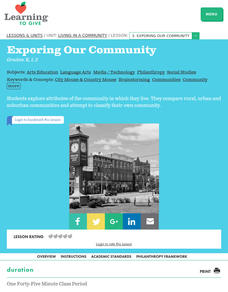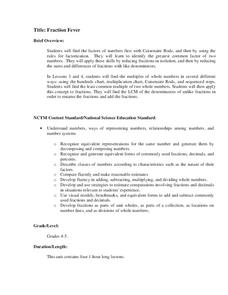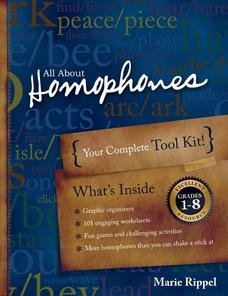Curated OER
An Exploration of Automotive Design
students research varied aspects of car design, and create a new design for the exterior body of a car. Students conduct Internet research, respond to writing prompts, and analyze, evaluate and synthesize information from multiple...
Curated OER
Memory Game
Students interact with different explorers and their motivations for exploration. They make a deck of memory cards. Students use 20 specific motivational factors in making their cards. They then play their game.
Curated OER
Early Explorers
Fifth graders explain the reasons why Europeans decided to explore and colonize the world. In this European explorers lesson, 5th graders complete a wall matrix about the explorers and write a summary about the explorer of their choice.
Curated OER
Cave Art
Students explore cave art. In this Neolithic Age lesson, students get into groups and research a given topic. Students create a poster with information and visual aids. Students then look a pictures and watch a DVD about artifacts found...
Curated OER
European Explorer's Photo Journal
Students study early European explorers. They choose one to research and complete a photo journal of his explorations, which includes maps, articles, etc.
Curated OER
Early Explorers
Students discover why explorers left their homes to explore and how they played an important part in the discovery of the New World. Students create PowerPoint presentations of a specific explorer's journey and discoveries and the...
Curated OER
Italian Renaissance
Fifth graders explore the Italian Rensissance in this six lessons unit. The prominent citizens, the ideas, values, art, philosophy, and literature of the are seen as a rediscovery of Ancient Greek and Roman times.
Curated OER
I Am Seventeen Going On ?
Students explore the differences between going through adolescence in New York City in 1980 and today by reading and discussing the article, "When He Was Seventeen." They write a script for a podcast about the teen/parent relationship...
Curated OER
This Old Tubeworm
Students plot data to construct and interpret a graph about vestimentiferans at cold-seep sites in the Gulf of Mexico. In this deep sea lesson, students plot data provided for the growth of tubeworms. They use the graphs to determine...
Curated OER
Let's Play Musical Shapes
Students practice recognizing shapes while using gross-motor skills. In this early childhood math movement lesson, students explore shapes as music plays and they walk the perimeter of large cut-out paper shapes by playing musical squares.
Curated OER
Shipwreck Mystery
Students draw inferences about a shipwreck. In this marine archaeologist lesson, students examine historical and archaeological data to draw inferences about the age and identity of shipwrecks.
Curated OER
Exporing Our Community
Students explore attributes of the community in which they live. They compare rural, urban and suburban communities and attempt to classify their own community. Each group illustrates their assigned area by drawing buildings, trees,...
American Museum of Natural History
What Do You Know About Archaeology?
A 10-question interactive permits young anthropologists to study the field of archaeology and the tools archaeologists use to dig into history.
College Board
2018 AP® United States History Free-Response Questions
Learners explore the the Age of Imperialism using primary sources and an authentic College Board documents-based question. Other prompts explore the economic changes brought about by the American Civil War, technology, mercantilism, and...
Curated OER
Unidentified (Flying?) Arthropods
Beginning biologists learn the characteristics of the five classes in the arthropod phylum. A student handout lists characteristics to help them identify five specimens. You will need to collect an example of each: arachnida, crustacea,...
Curated OER
Sharing My Older Friend With Others
Elementary learners explore the difference between aged characters and young characters in literature. They use Venn diagrams to compare and contrast the attributes given to both younger and older characters in different pieces of...
National Security Agency
Fraction Fever
This unit on fractions allows for upper-aged elementary learners to explore ways to find the greatest common factor and least common multiple of two numbers. Ultimately, young mathematicians will be able to identify equivalent fractions,...
Curated OER
Introduce Vocabulary: Mama, Do You Love Me? (Joosse)
Barbara Joosse approaches an age-old question through an equally traditional culture in her story Mama, Do You Love Me?, which helps budding readers explore Native American vocabulary in context. Here you'll find instruction to teach the...
Pulitzer Center
Writing About the "Arab Spring"
An information-rich resource, this webpage will provide your class with all the information they need to explore a relevant real-world and little understood topic: the Middle East and the people's revolutions that shook it in the spring...
Rain Bird Corporation
Rain Forest Teaching Curriculum
Take young naturalists on an exploration of the world's tropical rainforests with this extensive collection of lessons and activities. Whether its creating leaf and flower prints or investigating the absorption spectrum of chlorophyl,...
Curated OER
All About Homophones
Put the fun back in reading fundamentals with an interactive set of lessons about homophones. Learners of all ages explore the relationships between words that sound the same but have different meanings, and complete a variety of fun and...
Polar Trec
Calorimetry Lab
Young people between the ages of 11–13 need on average about 2,000 calories per day. Within the lab, groups learn about calorimetry and respiration. They explore how it pertains to humans and animals living the Arctic where cold...
Intel
Beat the Heat
Explore greenhouse effect and climate change through a 15-day unit. Scholars learn about these STEM concepts by researching, conducting surveys, experimenting, and collaborating with experts in the field. They frequently communicate...
McGraw Hill
H-R Diagram
As a star ages its composition, size, and temperature change. Using an interactive simulation, learners explore these changes over the lifetime of a star. They see the change in temperature and luminosity graphically and a visual...
Other popular searches
- Age of Exploration
- The Age of Exploration
- European Age of Exploration
- Age of Exploration 1400
- Age of Exploration Map
- First Age of Exploration
- Golden Age of Exploration
- Trade, Age of Exploration
- Age of Exploration Timeline
- Pirates Age of Exploration
- Trade Age of Exploration
- Age of Exploration Time Line

























